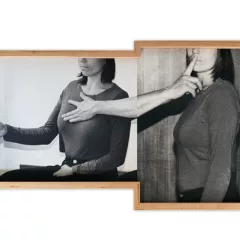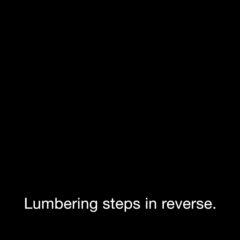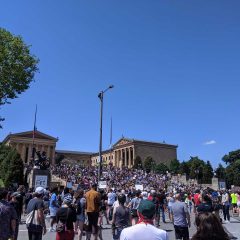[Dear Readers, today we begin publishing the essays of the 16 finalists in the New Art Writing Challenge Contest! Here is the first of four articles we publish today on Artblog and the St. Claire. Thanks to all those who participated, submitting more than 70 articles. And thanks to our jurors — Hrag Vartanian, Abigail Satinsky and Nell McClister — who picked the winners. We are energized by all the wonderful writing that was submitted and know you will enjoy reading it! — the Artblog editors]
Winner of the Prize for 1000 words or less
The Work of Art in the Age of Social Media
By Meredith Sellers
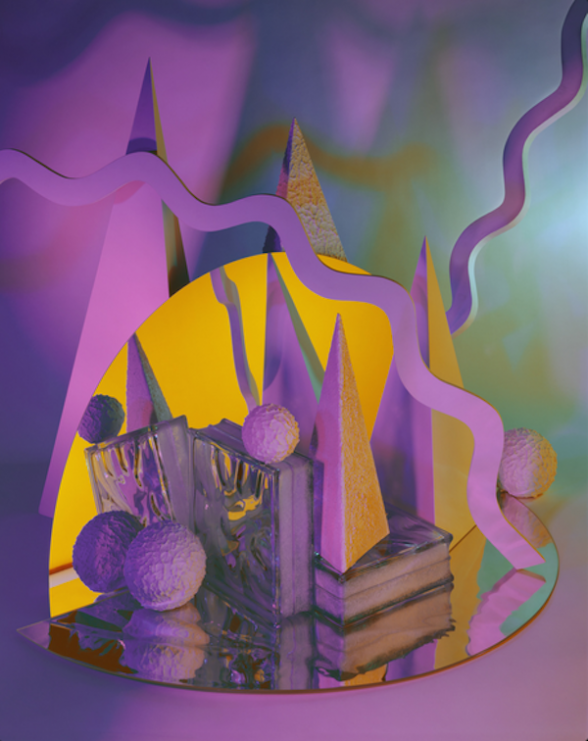
Barbara Kasten’s work is seductive. Her first major survey, Stages, currently at ICA, is marked by vivid, saturated colors, atmospheric light, and dark shadows, evinced by geometric shapes, squiggles, and lines. Her photographs are large format polaroids which cross the lines of disciplines, manipulate space and time, and have a sense of playfulness in their often severe forms. Though the majority of the work in this retrospective was made throughout the 80’s, it feels recent, familiar, hip. That may be because you’ve already seen it through the comfort of your personal screen.
In a recent talk, curator Alex Klein spoke of Kasten’s prescient unwillingness to be labeled as a photographer, sculptor, or anything else. ICA’s media for the show focused on the tactile aspect of her work, advertising with images of Kasten herself moving around the prop objects she was about to photograph. Her work, in its intensive staging, speaks to the constructs around us, and the increasingly staged and artificial ways we choose to present our lives. Her 1980’s series “Constructs” features the saturated colors and funky geometric shapes typical of that era’s design. It also has an instantly recognizable “internet vibe”. At first glance her work appears to be almost 3D rendered with its simple geometry, odd shadows, and floating surfaces. They are spatial illusions, created with elaborate set ups of custom-made shapes, mirrors, and colored lights. Painstakingly arranged and altered over hours and days, the sculptural forms Kasten creates are temporal and exist in the camera alone. But the intense and unseen labor that goes along with her work is lost amongst the ease of clicking a color mask in Photoshop.
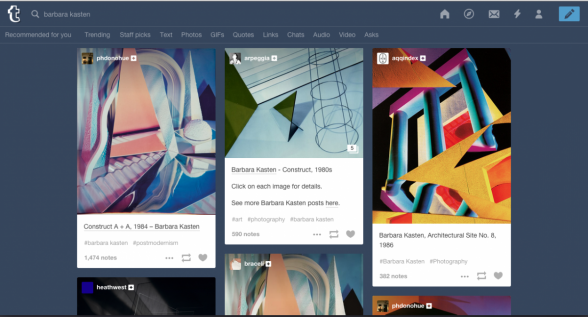
Still life of a certain kind and color palette has been hot for several years now, encompassing artists like Wynne Veen, Sarah Cynwar, Dom Sebastien, Joshua Citarella, Matt Lipps, or Alex Da Corte, whose own recent ICA show with Jayson Musson utilized a color scheme not dissimilar to many of Kasten’s works. The genre has become so ubiquitous that VICE magazine recently wrote a plea to “Stop the Lazy Still Life Photography”, which made reference to Kasten’s work as a genesis for what is now a lamentable Tumblr trope. If you search for Kasten on Tumblr and sort by popularity, the top result is an image of her Construct A+A, 1984. It has 1,462 notes and was posted in January 2013. Scrolling through, there are hundreds of other examples – all of the most popular were posted in 2013 or 2014 – but many of the most recent posts tagged with Kasten’s name have fewer than 10 notes. Having gradually absorbed these images over the past few years, it feels nearly impossible to disassociate Kasten from her Tumblr context of magenta gradients and houseplants.
It is, of course, not the primary job of a contemporary arts institution to be a trend forecasting agency. But in this age of ever faster technology, it feels strange – an unwelcome deja-vu – to see art on a wall that oversaturated our feeds what feels like a digital decade ago. Curators at museums and institutions are now tasked with the impossible; curating a show that will happen three years into the future and still feel relevant to the present. While Klein has mentioned Kasten’s online popularity in wall text and written materials for the show, and attempted to address the digital elephant in the room through programming and discussions, the subject hasn’t been brought to its logical conclusion – what is the fate of these images when the trend is dead? What happens to your work when your “brand” as an artist has been diluted?
Kasten is far from the only artist of the 80’s to have re-emerged into the zeitgeist on social media in the past several years. John Divola is another example, his similarly squiggly 80’s-inflected designs and interdisciplinary practice make him another reblog favorite. The Memphis design group has also seen an online resurgence in recent years, capitalizing its hipster stardom in a clothing collection for American Apparel last year, designed by original Memphis member Nathalie Du Pasquier. Even the online seapunk trend of 2011 superficially utilized some of Kasten’s aesthetics – Lisa Frank color, Greco-Roman architecture and figures, geometric designs. That subcultural trend exploded and ended abruptly within a year, after Rihanna unceremoniously appropriated the aesthetic in a video played during a set on Saturday Night Live, complete with floating greek busts, grid forms, and swimming dolphins. So how can an institution deal with the work of a serious artist that has been embraced and compromised by trends that are now passé?
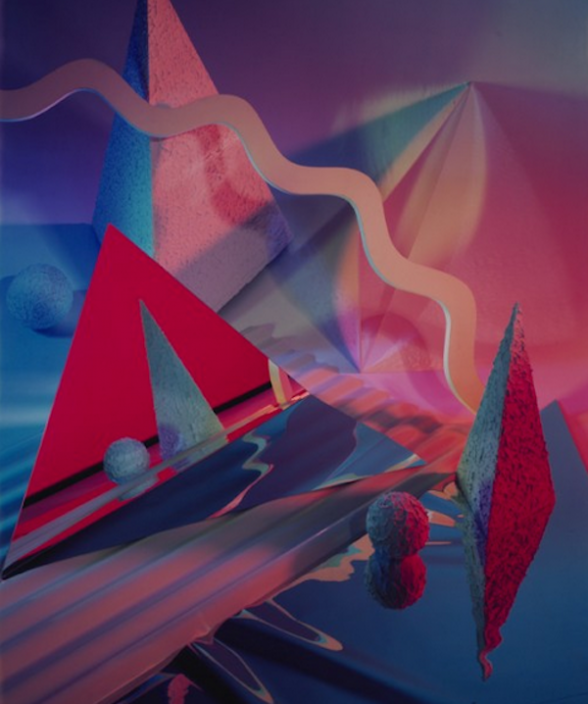
Kasten’s work feels especially precarious on this front. Her work reads as being primarily aesthetic, formalist in the extreme, and both its beauty and its vague content could be seen as part of the reason for it’s easy reblogability. Her own discussions of her work focus solely on her process. But she is an artist conceptually engaged in the California Light and Space movement, the Bauhaus, and physical manifestations of temporal space. The lack of conceptual discussion around her work leaves it vulnerable to absorption of superficial aesthetic qualities in other works.
The danger here is not necessarily in the work itself, but rather in visual overexposure. Kasten is a victim of trend. The show is a survey of a female artist who is largely under recognized, who pioneered techniques, defied genres, and undoubtedly deserves this retrospective. But for real objects to compete against massively shared, digitally simulated images of themselves is a tall order. There’s a pervasive sense of having already been, already seen, already appropriated into something easier, more digestible, and more blogable. The timing perhaps simply can’t do Kasten justice. There are no easily available answers for ways that institutions can deal with this challenge, but it will certainly continue to be an issue as sharing platforms become larger, more accessible, and more disposable. When it comes to visual culture, the simulacra of the internet speaks louder – and, perhaps more importantly, first.
Meredith Sellers is an artist, educator, and sometimewriter currently living and working in Philadelphia. Born in Baltimore in 1988, she earned her BFA in Painting with a minor in Art History from the Maryland Institute College of Art in 2010 and her MFA in Interdisciplinary Fine Arts in 2012 from the University of Pennsylvania. She works somewhere between painting, video, and installation. meredithsellers.tumblr.com



